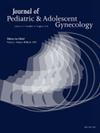“Really Hard to Navigate”: A Qualitative Study of Motivators, Barriers, and Supports of Adolescent-Clinician Communication on Patient Portals
IF 1.8
4区 医学
Q3 OBSTETRICS & GYNECOLOGY
引用次数: 0
Abstract
Purpose
To understand how patient portals can support adolescent sexual and reproductive health (SRH) care needs and to identify factors impacting use of patient portals for adolescent-clinician communication.
Methods
We conducted semi-structured interviews with adolescents, parents/guardians, and primary care providers (PCPs) by video or phone. Interview guides explored experiences with adolescent healthcare-seeking generally and SRH care specifically, as well as perspectives regarding adolescent portal use. Interviews were recorded, transcribed, and deidentified. Interviewer summaries written after each interview noted key themes that informed analysis. The analysis team collaboratively coded transcripts. Codes were synthesized into analytic memos, which were refined to develop results.
Results
We interviewed 31 people from 1 health system: 10 adolescents 14-17 years old and 10 parents/guardians of adolescents aged 14-17, and 11 primary care providers (PCPs). A motivator of portal use shared by all participants included convenience of use. Clinicians and parents/guardians also viewed portals as a tool to support adolescent independence and improve quality of care. Barriers shared by all participants included lack of adolescent portal uptake and dissatisfaction with functionality. Clinicians and adolescents raised concerns about confidentiality while parents and clinicians raised concerns about safety of care. Supports shared by all participants included encouragement and guidance from trusted adults, while adolescents and clinicians described the reinforcing nature of positive care experiences using the portal.
Discussion
Through the perspectives of adolescents, parents/guardians, and clinicians, we elucidated key factors that may influence adolescent portal use for SRH care needs. We identified critical intervention targets for future research.
“真的很难导航”:一项定性研究的动机,障碍,并支持青少年与临床医生沟通的病人门户网站。
目的:了解患者门户网站如何支持青少年性健康和生殖健康(SRH)护理需求,并确定影响青少年与临床医生沟通使用患者门户网站的因素。方法:通过视频或电话对青少年、家长/监护人和初级保健提供者(pcp)进行半结构化访谈。访谈指南探讨了青少年寻求医疗保健的一般经验,特别是性健康和生殖健康护理,以及关于青少年门户网站使用的观点。采访被记录、转录和鉴定。面试官在每次面试后写总结,指出了为分析提供信息的关键主题。分析团队协作编码转录本。代码被合成为分析备忘录,这些备忘录被改进以发展结果。结果:我们采访了来自一个卫生系统的31人:10名14-17岁的青少年和10名14-17岁青少年的父母/监护人,以及11名初级保健提供者(pcp)。所有参与者共享的使用门户的动机包括使用的便利性。临床医生和家长/监护人也将门户网站视为支持青少年独立和提高护理质量的工具。所有参与者共有的障碍包括青少年门户缺乏吸收和对功能的不满。临床医生和青少年提出了对保密性的担忧,而家长和临床医生则提出了对护理安全性的担忧。所有参与者分享的支持包括来自可信任的成年人的鼓励和指导,而青少年和临床医生则描述了使用门户网站的积极护理体验的强化性质。讨论:通过青少年、父母/监护人和临床医生的观点,我们阐明了可能影响青少年门户网站用于性健康和生殖健康护理需求的关键因素。我们确定了未来研究的关键干预目标。
本文章由计算机程序翻译,如有差异,请以英文原文为准。
求助全文
约1分钟内获得全文
求助全文
来源期刊
CiteScore
3.90
自引率
11.10%
发文量
251
审稿时长
57 days
期刊介绍:
Journal of Pediatric and Adolescent Gynecology includes all aspects of clinical and basic science research in pediatric and adolescent gynecology. The Journal draws on expertise from a variety of disciplines including pediatrics, obstetrics and gynecology, reproduction and gynecology, reproductive and pediatric endocrinology, genetics, and molecular biology.
The Journal of Pediatric and Adolescent Gynecology features original studies, review articles, book and literature reviews, letters to the editor, and communications in brief. It is an essential resource for the libraries of OB/GYN specialists, as well as pediatricians and primary care physicians.

 求助内容:
求助内容: 应助结果提醒方式:
应助结果提醒方式:


